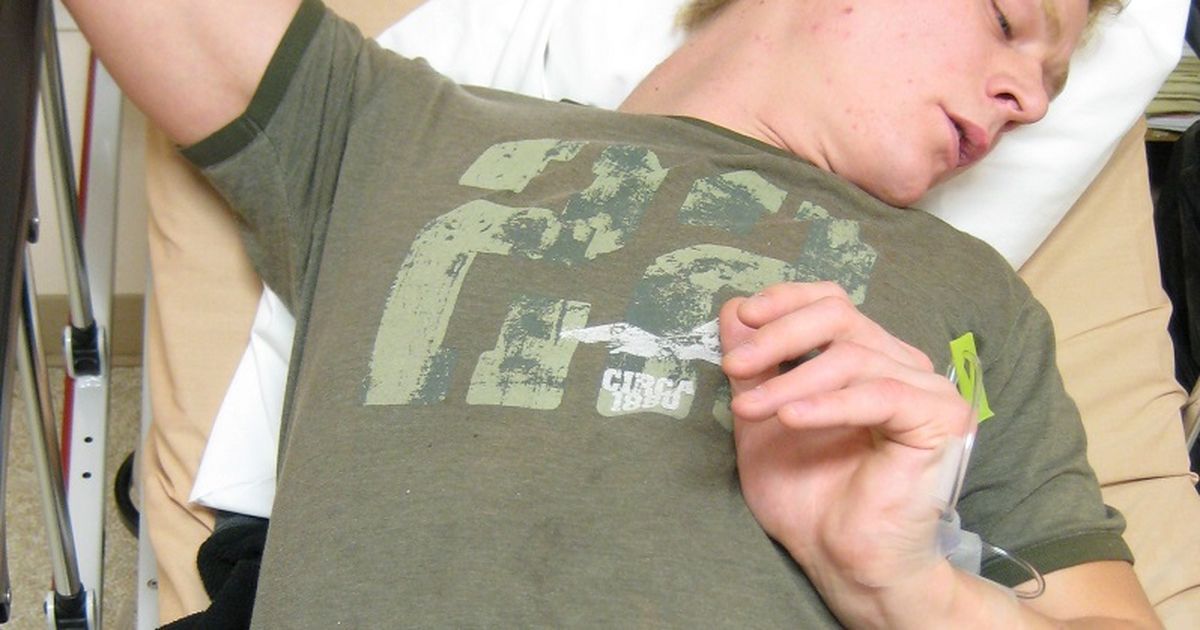
Drug-induced dystonia (DID) represents a significant neurological complication that can arise from exposure to various pharmacological agents. Characterized by sustained or intermittent muscle contractions causing abnormal, often repetitive movements and postures, DID can range from acutely distressing to chronically disabling. Early recognition and appropriate management are paramount to mitigating its impact and improving patient outcomes.
Introduction to Drug-Induced Dystonia
Dystonia is a movement disorder characterized by sustained or intermittent muscle contractions causing abnormal, often repetitive movements, postures, or both. Drug-induced dystonia is a type of secondary dystonia, where these involuntary movements are directly attributable to the use of a medication. While often reversible upon drug withdrawal, some forms, particularly tardive dystonia, can persist for extended periods, posing significant challenges for patients and clinicians alike. Understanding the diverse clinical presentations, the range of causative agents, and a structured approach to diagnosis and treatment is essential for all healthcare professionals.
Diagnostic Approach to Drug-Induced Dystonia
A systematic diagnostic approach is crucial to correctly identify DID, differentiate it from other movement disorders, and exclude alternative etiologies. This process relies heavily on a detailed clinical history, thorough neurological examination, and judicious use of investigations.
Step 1: Clinical Suspicion and Comprehensive History Taking
The cornerstone of diagnosing DID lies in a high index of suspicion and meticulous history taking.
- Medication History: This is the most critical element.
- Detailed Drug List: Obtain a complete list of all medications, including prescription, over-the-counter (OTC) drugs, herbal remedies, illicit substances, and recent vaccinations. Document dosage, frequency, start and stop dates, and any recent changes (initiation, dose escalation, withdrawal).
- Drug Classes of Concern: Pay particular attention to drugs known to precipitate dystonia. The most common culprits are dopamine receptor blocking agents (DRBAs), including first-generation (typical) antipsychotics (e.g., haloperidol, chlorpromazine), and to a lesser extent, second-generation (atypical) antipsychotics (e.g., risperidone, olanzapine). Other frequently implicated drugs include antiemetics (e.g., metoclopramide, prochlorperazine), selective serotonin reuptake inhibitors (SSRIs), calcium channel blockers (e.g., flunarizine, cinnarizine), antiepileptic drugs (e.g., carbamazepine, lamotrigine), dopamine agonists (paradoxically, in some contexts), and rarely, opioids, lithium, and others.
- Prior Reactions: Inquire about any history of similar reactions to medications in the past, as this increases susceptibility.
- Characterization of Dystonia:
- Onset and Course: Determine the precise onset relative to drug initiation or dose change. Acute dystonia typically occurs within hours to days of exposure, while tardive dystonia has a delayed onset, often weeks to months or even years after continuous use, or even after withdrawal.
- Clinical Features: Describe the nature of the involuntary movements and postures. Are they sustained, repetitive, patterned, or twisting? Document the body parts affected (focal – e.g., blepharospasm, torticollis; segmental – e.g., craniocervical; multifocal; generalized – affecting trunk and limbs).
- Aggravating/Alleviating Factors: Note if stress, fatigue, or specific movements worsen the dystonia, and if “sensory tricks” (geste antagoniste) or rest alleviate it.
- Associated Symptoms: Assess for pain, anxiety, dysphagia, dysarthria, or respiratory distress (especially with laryngeal or truncal involvement).
- Past Medical History: Document any pre-existing neurological conditions, psychiatric disorders, or other medical comorbidities that might confound the diagnosis or influence management.
Step 2: Clinical Examination
A thorough neurological examination is essential to characterize the dystonia and exclude other movement disorders.
- General Observation: Observe the patient at rest and during voluntary movements. Look for sustained muscle contractions, abnormal postures, and repetitive twisting movements.
- Dystonia Phenomenology:
- Distribution: Identify affected body regions (e.g., oculogyric crisis, torticollis, truncal arching, limb dystonia).
- Type: Differentiate between focal, segmental, multifocal, and generalized dystonia.
- Severity: Assess the impact on function and presence of pain.
- Co-existing Movement Disorders: Carefully differentiate dystonia from other drug-induced movement disorders, such as:
- Akathisia: Subjective feeling of inner restlessness and objective inability to sit still.
- Tardive Dyskinesia: Repetitive, involuntary, purposeless movements, most commonly affecting the face, mouth, lips, and tongue (orofacial dyskinesia).
- Myoclonus: Brief, shock-like muscle jerks.
- Tremor: Rhythmic, oscillatory movement.
- Motor and Sensory Examination: Assess muscle tone, strength, reflexes, and sensation to rule out other neurological deficits.
Step 3: Temporal Relationship and Identifying the Suspect Drug
Establishing a clear temporal relationship between drug exposure and dystonia onset is crucial.
- Acute Dystonia: Typically presents within hours to days (usually <7 days) of starting a new medication, increasing a dose, or rarely, rapid withdrawal of an anticholinergic. Young males are particularly susceptible.
- Tardive Dystonia: Develops after prolonged exposure (weeks to months, often >3 months) to DRBAs. It can also emerge or worsen upon dose reduction or discontinuation of the offending agent.
Step 4: Exclusion of Other Causes
Before definitively attributing dystonia to a drug, it is imperative to exclude other primary and secondary causes of dystonia.
- Primary Dystonias: Idiopathic or genetic dystonias (e.g., DYT-TOR1A/DYT1 dystonia) can mimic DID. Family history of dystonia or other movement disorders should be explored.
- Secondary Dystonias not Drug-Induced:
- Structural Lesions: Basal ganglia lesions (stroke, tumor, trauma, arteriovenous malformation) can cause symptomatic dystonia.
- Metabolic Disorders: Wilson’s disease, mitochondrial disorders, aminoacidurias.
- Infections: Post-encephalitic dystonia, HIV.
- Autoimmune Conditions: Systemic lupus erythematosus, paraneoplastic syndromes.
- Toxins: Carbon monoxide, methanol.
- Investigations:
- Neuroimaging: Brain MRI is often recommended to rule out structural lesions, especially if the dystonia is unilateral, focal with other neurological signs, or progressive.
- Laboratory Tests: May include copper/ceruloplasmin levels (Wilson’s disease), thyroid function tests, electrolytes, autoimmune markers, ESR/CRP, and genetic testing for primary dystonias if clinically indicated.
- Cerebrospinal Fluid Analysis: Rarely necessary, but considered in suspected inflammatory or infectious etiologies.
Step 5: Diagnostic Confirmation
The diagnosis of drug-induced dystonia is primarily clinical, based on the presence of dystonia, exposure to a known causative drug with a plausible temporal relationship, and the exclusion of other causes. Improvement following drug withdrawal or administration of specific antidotes (e.g., anticholinergics for acute neuroleptic-induced dystonia) further supports the diagnosis. Re-challenge with the suspected drug is generally not recommended due to safety concerns.
Management for Patients Suspected of Drug-Induced Dystonia
Management strategies for DID depend on the acuity, severity, and type (acute vs. tardive) of dystonia. The overarching goals are to alleviate symptoms, prevent recurrence, and improve functional independence.
(a) Immediate Management of Acute Drug-Induced Dystonia
Acute dystonic reactions are medical emergencies that require prompt intervention.
- Discontinuation of the Causative Agent: This is the single most important and immediate step. Cease administration of the suspected drug without delay.
- Pharmacological Intervention (First-Line):
- Anticholinergics: These are highly effective for acute dystonia due to their ability to restore the balance between dopamine and acetylcholine in the basal ganglia.
- Benztropine: 1-2 mg IV or IM.
- Diphenhydramine: 25-50 mg IV or IM (has significant anticholinergic properties).
- Benzodiazepines: Can be used as an adjunct, especially if anticholinergics are insufficient or contraindicated, or if there is significant anxiety or muscle spasm.
- Lorazepam: 0.5-2 mg IV or IM.
- Diazepam: 5-10 mg IV or IM.
- Route of Administration: IV or IM routes are preferred for rapid onset of action in acute settings. Oral administration can be considered for milder reactions or for maintenance after initial IV/IM relief.
- Anticholinergics: These are highly effective for acute dystonia due to their ability to restore the balance between dopamine and acetylcholine in the basal ganglia.
- Supportive Care and Monitoring:
- Airway Management: In cases of laryngeal or pharyngeal dystonia, which can lead to stridor or airway obstruction, ensure airway patency and consider intubation if necessary.
- Pain Management: Address severe pain associated with muscle spasms.
- Reassurance: Patients are often distressed and anxious; provide calm reassurance.
- Observation: Monitor the patient for resolution of symptoms and adverse effects of treatment. Recurrence is possible, especially if the drug’s half-life is long.
(b) Management of Persistent or Tardive Drug-Induced Dystonia
Tardive dystonia is often more challenging to treat, as symptoms may be persistent or irreversible even after drug withdrawal.
- Drug Withdrawal and Substitution:
- Gradual Taper: If the offending drug (e.g., antipsychotic) is clinically necessary, a slow, supervised taper should be attempted to avoid withdrawal-emergent dystonia or worsening of underlying psychiatric symptoms.
- Alternative Medications: Consider switching to medications with a lower propensity for inducing dystonia, such as second-generation atypical antipsychotics (e.g., clozapine, quetiapine, aripiprazole) if a DRBA is required. However, even atypical antipsychotics carry some risk.
- Pharmacological Treatment (Long-Term):
- Anticholinergics (Oral): Benztropine or trihexyphenidyl can be used orally for long-term symptom control, often started at low doses and titrated up. High doses can lead to significant side effects (e.g., cognitive impairment, urinary retention, dry mouth).
- Benzodiazepines (Oral): Clonazepam or lorazepam can provide muscle relaxation and anxiolysis.
- Vesicular Monoamine Transporter Type 2 (VMAT2) Inhibitors: These drugs (e.g., tetrabenazine, deutetrabenazine, valbenazine) are approved for tardive dyskinesia but also show efficacy in tardive dystonia by reducing presynaptic dopamine. They require careful titration and monitoring for adverse effects (e.g., parkinsonism, sedation, depression, suicidality).
- Baclofen: Oral baclofen, a GABAB receptor agonist, can be effective as a muscle relaxant. In severe, generalized, and refractory cases, intrathecal baclofen delivery via a pump may be considered.
- Botulinum Toxin Injections: For focal or segmental tardive dystonia (e.g., cervical dystonia, blepharospasm, limb dystonia), botulinum toxin injections directly into the affected muscles are highly effective. They temporarily weaken the muscles, reducing spasms and pain for several months.
- Other Agents (Less Common): Amantadine, clonidine, tizanidine, and carbamazepine have been tried with variable success.
- Non-Pharmacological and Advanced Interventions:
- Physical and Occupational Therapy: Therapists can provide strategies for managing dystonia, including stretching exercises, splinting, sensory tricks, and adaptive equipment to improve function and quality of life.
- Psychological Support: Address the significant psychological burden (anxiety, depression, social isolation) associated with chronic dystonia.
- Deep Brain Stimulation (DBS): For severe, generalized, and refractory tardive dystonia that has failed extensive pharmacological trials and botulinum toxin, DBS of the globus pallidus internus (GPi) can be a highly effective treatment option. Patient selection is crucial, and the procedure is typically performed in specialized movement disorder centers.
(c) Prevention of Drug-Induced Dystonia
Prevention is always preferable to treatment.
- Careful Drug Selection: Avoid high-potency typical antipsychotics or antiemetics (e.g., metoclopramide) in susceptible individuals, especially young males or those with a history of previous dystonic reactions.
- Dose Titration: Start with the lowest effective dose and titrate slowly, monitoring for adverse effects.
- Prophylactic Anticholinergics: While routine prophylaxis with anticholinergics (e.g., benztropine) for all patients starting DRBAs is controversial due to anticholinergic side effects, it may be considered for high-risk individuals (young males, history of dystonia, high-dose typical antipsychotics) for a short initial period.
- Patient Education: Educate patients and their families about the symptoms of dystonia and the importance of immediate reporting to healthcare providers.
Conclusion
Drug-induced dystonia is a potentially debilitating condition that necessitates a structured and prompt approach to diagnosis and management. A meticulous clinical history, particularly focusing on medication exposure and the temporal relationship, combined with a thorough neurological examination and judicious exclusion of other etiologies, forms the bedrock of diagnosis. Acute dystonia often responds rapidly to anticholinergics and drug withdrawal, while tardive forms demand a more nuanced, long-term strategy involving drug modification, oral pharmacotherapy, botulinum toxin, and in refractory cases, advanced interventions like DBS. Emphasizing prevention through careful prescribing practices and patient education remains a critical aspect of mitigating the incidence and impact of DID.
References
- Jankovic, J. (2018). Dystonia: Clinical Approach. Movement Disorders, 33(7), 1055-1066.
- Bhidayasiri, R., & Truong, D. D. (2009). Chorea and Dystonia: A Review of Drug-Induced Movement Disorders. Journal of Clinical Movement Disorders, 1(1), 1-13.
- Gardner, D. M., & Murphy, S. M. (2018). Drug-induced movement disorders: An overview. Journal of Clinical Psychopharmacology, 38(5), 450-459.
- Fox, S. H., & Lang, A. E. (2018). Drug-induced dystonia and dyskinesia. Handbook of Clinical Neurology, 155, 345-359.
- American Psychiatric Association. (2013). Diagnostic and Statistical Manual of Mental Disorders (DSM-5). American Psychiatric Publishing. (Relevant for criteria related to medication-induced movement disorders).
- Fahn, S., & Jankovic, J. (2011). Principles and Practice of Movement Disorders. Elsevier Saunders.
- Frank, S., & Becker, L. A. (2020). Tardive Dystonia: Clinical Overview and Management. Current Treatment Options in Neurology, 22(8), 28.
- Carbon, M., & Dauer, W. T. (2019). Dystonia. Neurologic Clinics, 37(1), 31-43.
- Patel, A., & Besedovsky, L. (2022). Acute Dystonic Reaction. In: StatPearls [Internet]. StatPearls Publishing.







